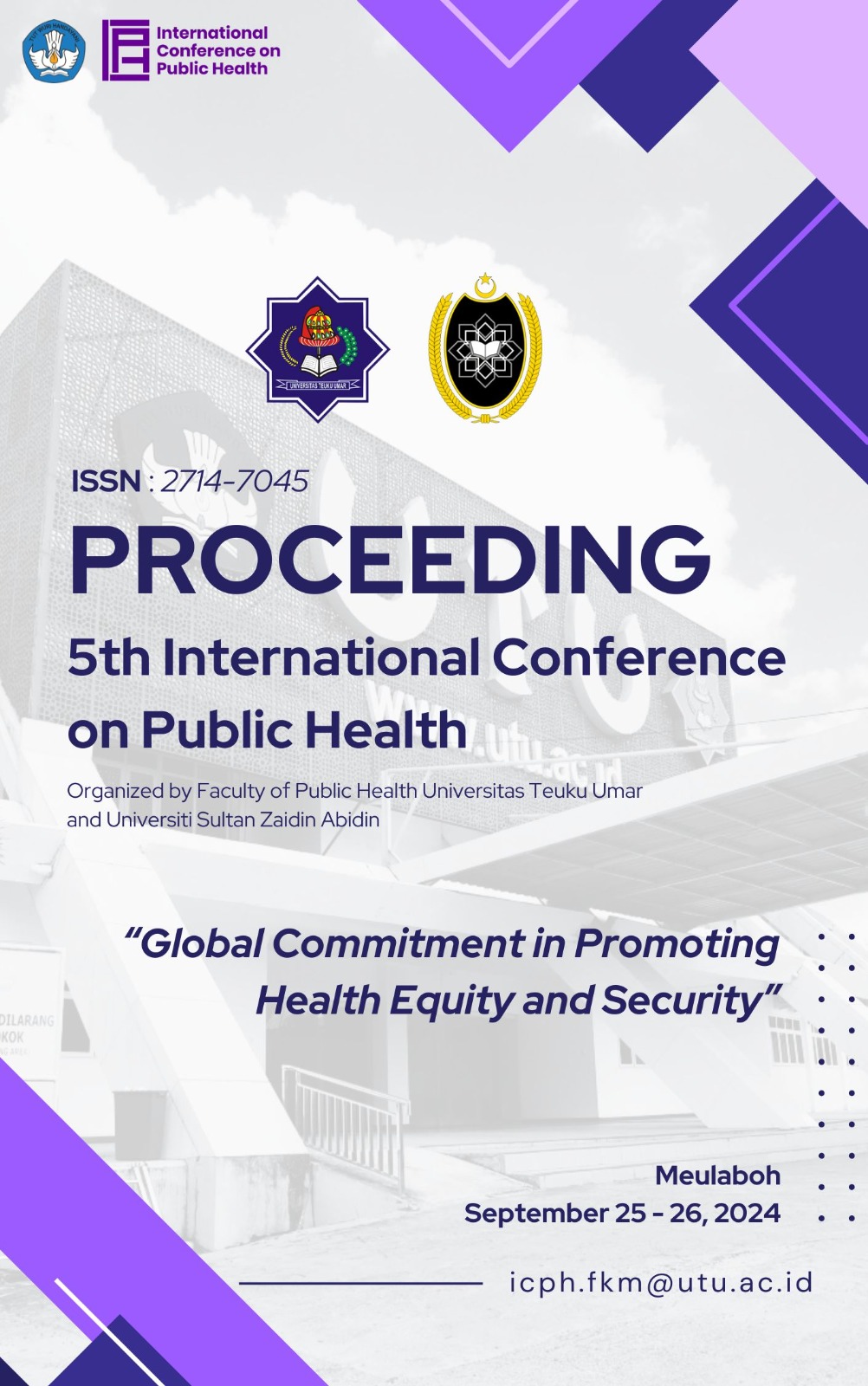Outbreak Investigation of Scombroid Fish Poisoning in Pandak Sub-district, Bantul Regency, 2024
Keywords:
Outbreak, Investigation, PoisoningAbstract
On May 29th, 2024, Bantul District Health Office received information about a suspected food poisoning in Pandak Sub-district after consuming mackerel fish. The report stated that the patients experienced headache, chest palpitations, vomiting, rash or skin redness, flushing, diarrhea and dizziness. This investigation aims to confirm the outbreak, evaluate the risk factors, and recommend preventive measures. We conducted an active case finding to find additional cases. Cases were defined as persons who consumed mackerel fish sourced from a distributor in Piring Hamlet on May 27-28th, 2024 and have one or more symptoms of headache, nausea, chest palpitations, vomiting, burning sensation around mouth or head, rash or skin redness, flushing, diarrhea and dizziness. Data was collected by interview using a structured questionnaire and environmental observation. We also carried out a laboratory test of raw and fried mackerel. Data were analyzed descriptively. There were 48 people who were interviewed and found 11 cases with 2 of them being hospitalized. The main symptoms were dizziness (81.8%), headache (72.2%) and chest palpitations (63.6%). Incubation period was 5-120 minutes with average at 47 minutes. The highest attack rate was found in males (26.09%), those aged 19-64 years (27.78%), and those living in Kauman and Triharjo Village (50%). According to the laboratory test result, histamine was the cause of this outbreak with results of 3633.87mg/kg found in fried mackerel and 163.27 mg/kg in raw mackerel. Improper food storage during the distribution from distributor to community level reseller was the risk factor that caused histamine poisoning. There was a scombroid poisoning outbreak in Pandak Sub-district on May 29th, 2024 caused by contaminated mackerel fish that produce histamine. Improper food storage during distribution of fish was the main risk factor. We recommend DHO to give health promotion to ensure proper handling, storage, distribution and processing the mackerel.
References
Chung, B. Y., Park, S. Y., Byun, Y. S., Son, J. H., Choi, Y. W., Cho, Y. S., Kim, H. O., & Park, C. W. (2017). Effect of Different Cooking Methods on Histamine Levels in Selected Foods. Annals of Dermatology, 29(6), 706. https://doi.org/10.5021/ad.2017.29.6.706
Colombo, F. M., Cattaneo, P., Confalonieri, E., & Bernardi, C. (2018). Histamine food poisonings: A systematic review and meta-analysis. Critical Reviews in Food Science and Nutrition, 58(7), 1131–1151. https://doi.org/10.1080/10408398.2016.1242476
Feng, C., Teuber, S., & Gershwin, M. E. (2016). Histamine (Scombroid) Fish Poisoning: A Comprehensive Review. Clinical Reviews in Allergy & Immunology, 50(1), 64–69. https://doi.org/10.1007/s12016-015-8467-x
Food And Drugs Assosiation. (n.d.). Fish and Fishery Products Hazards and Controls Guidance Chapter 7 Scombrotoxin (Histamine) Formation. 2024. https://www.fda.gov/media/80248/download
Fung, F., Wang, H.-S., & Menon, S. (2018). Food safety in the 21st century. Biomedical Journal, 41(2), 88–95. https://doi.org/10.1016/j.bj.2018.03.003
Hungerford, J. M. (2021). Histamine and Scombrotoxins. Toxicon, 201, 115–126. https://doi.org/10.1016/j.toxicon.2021.08.013
King, T., Cole, M., Farber, J. M., Eisenbrand, G., Zabaras, D., Fox, E. M., & Hill, J. P. (2017). Food safety for food security: Relationship between global megatrends and developments in food safety. Trends in Food Science & Technology, 68, 160–175. https://doi.org/10.1016/j.tifs.2017.08.014
Nutrition, C. for F. S. and A. (2024). How to Report Seafood-Related Toxin and Scombrotoxin Fish Poisoning Illnesses. FDA. https://www.fda.gov/food/outbreaks-foodborne-illness/how-report-seafood-related-toxin-and-scombrotoxin-fish-poisoning-illnesses
Permenkes RI No. 2 Tahun 2013 (2013). Food Poisoning Outbreak. Ministry of Health Republic of Indonesia
Permenkes RI No. 86 Tahun 2019 (2019). Food Safety. Ministry of Health Republic of Indonesia
Sandria, E. E., Sipahutar, Y. H., Sayuti, M., & Napitupulu, R. J. (2023). Pengolahan Ikan Lemuru (Sardinella lemuru) Kaleng Dengan Media Saus Tomat di PT. BMP Food Canning Industry, Negara-Bali.
Santoso, A., Palupi, N. S., & Kusumaningrum, H. D. (2020). PENGENDALIAN HISTAMIN PADA RANTAI PROSES PRODUK IKAN TUNA BEKU EKSPOR. Jurnal Standardisasi, 22(2), 131. https://doi.org/10.31153/js.v22i2.814
Smolinska, S., Jutel, M., Crameri, R., & O’Mahony, L. (2014). Histamine and gut mucosal immune regulation. Allergy, 69(3), 273–281. https://doi.org/10.1111/all.12330
Velut, G., Delon, F., Mérigaud, J. P., Tong, C., Duflos, G., Boissan, F., Watier-Grillot, S., Boni, M., Derkenne, C., Dia, A., Texier, G., Vest, P., Meynard, J. B., Fournier, P. E., Chesnay, A., & Pommier De Santi, V. (2019). Histamine food poisoning: A sudden, large outbreak linked to fresh yellowfin tuna from Reunion Island, France, April 2017. Eurosurveillance, 24(22). https://doi.org/10.2807/1560-7917.ES.2019.24.22.1800405
Zapata, R., Acevedo, K., Mella, M., Mella, V., & Zapata, K. (2021). A clinical epidemiological onsite study of a massive outbreak of Scombroid fish poisoning after consumption of yellowtail kingfish in northern Chile. Journal of Food Safety and Hygiene. https://doi.org/10.18502/jfsh.v6i3.6946





